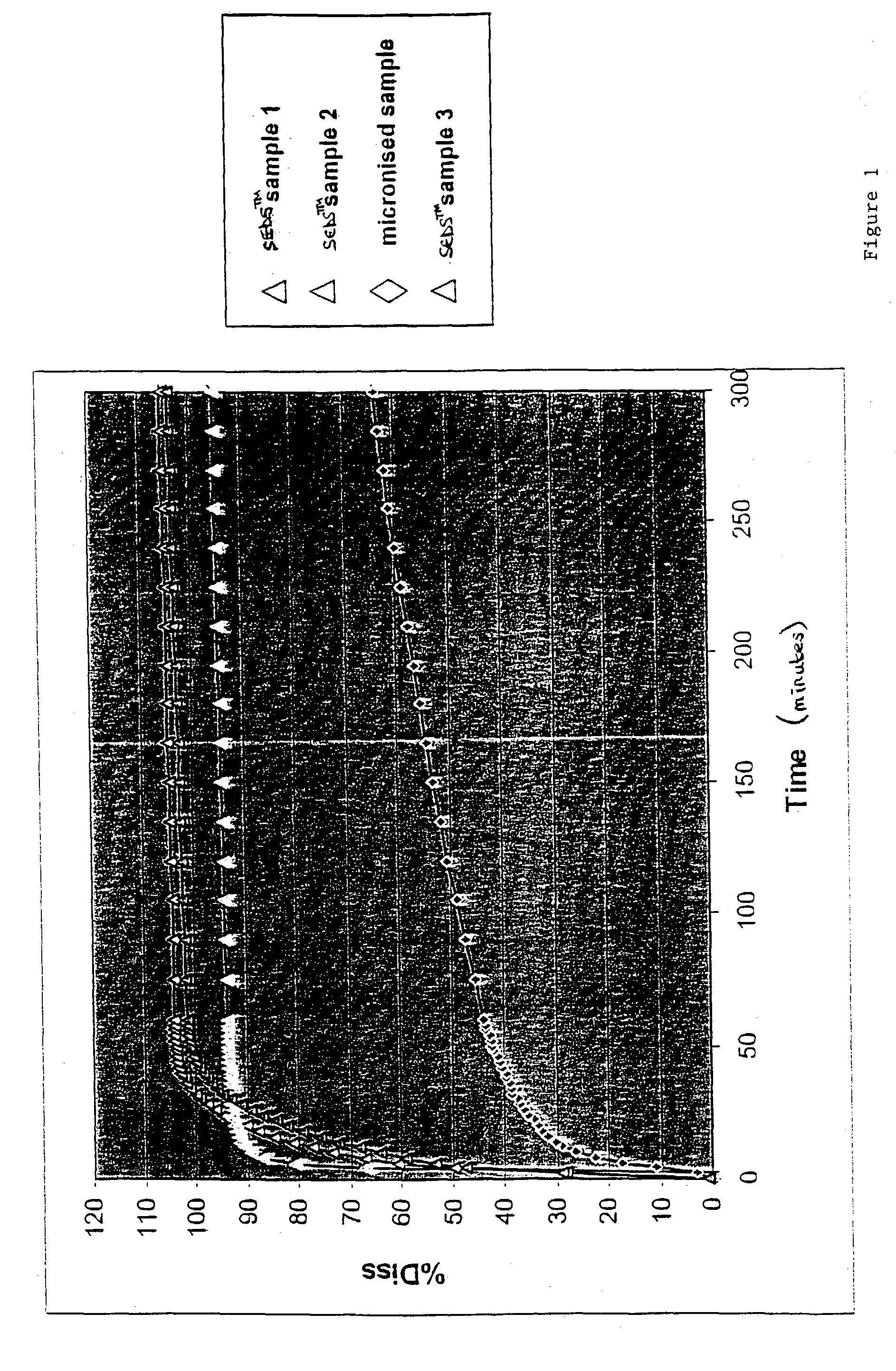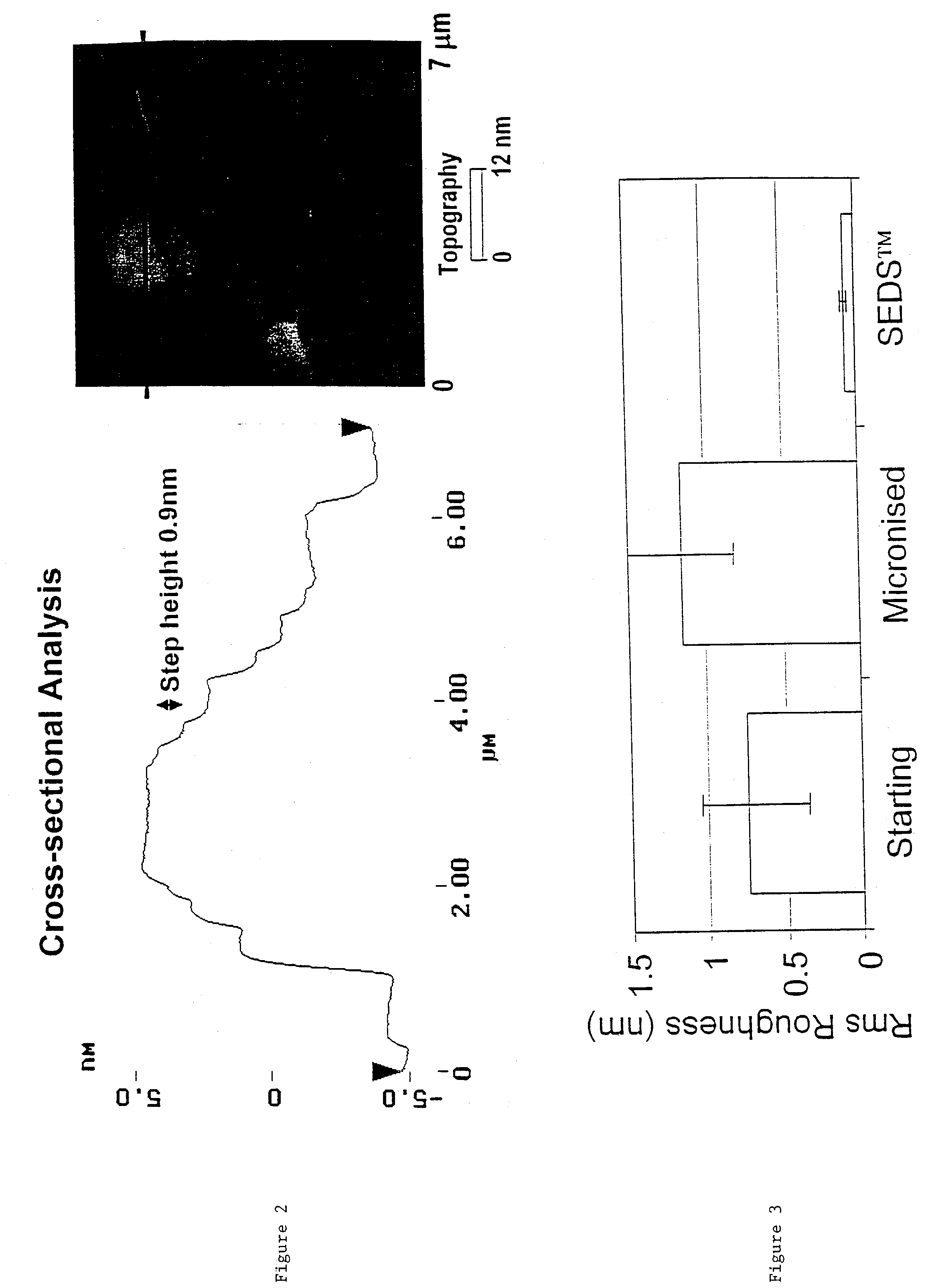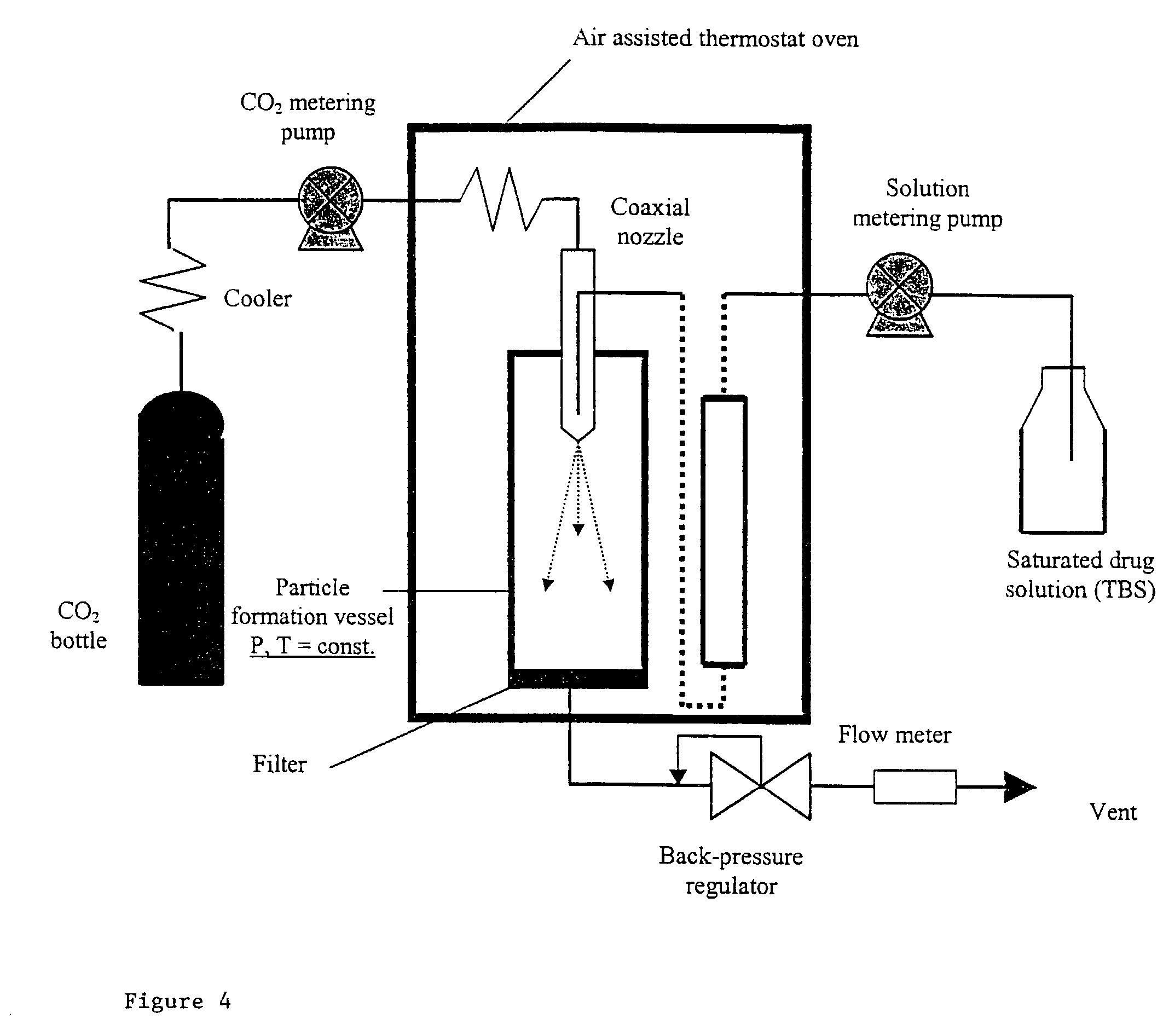Particulate materials
a technology of particulate materials and active substances, which is applied in the direction of peptide/protein ingredients, extracellular fluid disorder, metabolic disorder, etc., can solve the problems of less than satisfactory performance in dpi and similar delivery devices, and the dispersion of powder from the device increases with the patient's inspiratory effort, so as to reduce surface roughness
- Summary
- Abstract
- Description
- Claims
- Application Information
AI Technical Summary
Benefits of technology
Problems solved by technology
Method used
Image
Examples
example 1
[0140]The SEDS™ method described in WO 95 / 01221 was employed to prepare powders of salmeterol xinafoate (SX, GlaxoSmithKline), terbutaline sulphate (TBS, AstraZeneca) and fenoterol hydrobromide (FHBr, Boehringer Ingelheim). The particle formation vessel of 0.5 L volume was used in all cases. Several solvents including methanol. Ethanol, acetone and tetrahydrofurane were tested. Typical flow rate of CO2 was 5 kg / hour.
Analytical Methods
[0141]PSD measurements were performed using firstly, AeroSizer time-of-flight instrument equipped with AeroDisperser™ (TSI Inc., Minneapolis. USA) and secondly, laser diffraction sensor Helos with dry-powder air-dispersion system Rodos (Sympatec GmbH. Germany). The volume mean particle diameter, VMD, was obtained for both instruments using software options. In the general case of non-spherical particles, these instruments cannot provide the exact value of VMD, however, the time-of-flight technique gives an aerodynamic-equivalent particle diameter, where...
example 2
[0149]Salmeterol xinafoate (SX) (GlaxoWellcome, Ware UK) in the form of granulated material (G-SX) used for micronisation and micronised powder (M-SX). HPLC grade solvent was purchased from BDH Chemicals, Leicester, UK. All analytical grade liquid probes used in IGC studies were purchased from Labscan. Dublin, Ireland. Industrial grade (>99.95% pure) CO2 was supplied by Air Products (Manchester, UK).
[0150]The SEDS™ method was employed to prepare powders of SX form I (S-SX). This technique is based on mixing between supercritical CO2 antisolvent and a drug solution using a twin-fluid nozzle as more fully described in WO 95 / 01221 cited above. Methanol, acetone and tetrahydrofurane were tested in this work. The particle formation vessel (500 ml volume) with the nozzle was placed in an air-heated oven. The temperature in the vessel was monitored by a thermocouple with accuracy ±0.1° C. and was kept constant at 40° C. Pressure in the vessel was controlled by an air-actuated back-pressure...
example 3
[0169]This example measured the surface charge and adhesiveness of particles of the drug salbutamol sulphate produced using a SEDS™ process as compared to that of both the unprocessed starting material and a micronised sample of the drug.
[0170]Surface charge was examined by placing weighed portions of the samples in a Faraday well to measure their electrostatic charge.
[0171]A simple adhesion test was devised to examine the observation that the ultra-fine powders prepared by the SEDS™ process exhibited low adhesion to containers and vessel walls, and low adhesive interaction with surfaces in general. In this test, a small quantity of powder was weighed into a screw topped glass jar and the jar rotated for 5 minutes. The non-adhering powder was then tipped from the jar and weighed and the percentage powder adhering to the walls of the jar calculated.
[0172]The results of both the charge and the adhesion tests are shown in Table 6 below. It can be seen that both the unprocessed and the ...
PUM
| Property | Measurement | Unit |
|---|---|---|
| Fraction | aaaaa | aaaaa |
| Fraction | aaaaa | aaaaa |
| Diameter | aaaaa | aaaaa |
Abstract
Description
Claims
Application Information
 Login to View More
Login to View More - R&D
- Intellectual Property
- Life Sciences
- Materials
- Tech Scout
- Unparalleled Data Quality
- Higher Quality Content
- 60% Fewer Hallucinations
Browse by: Latest US Patents, China's latest patents, Technical Efficacy Thesaurus, Application Domain, Technology Topic, Popular Technical Reports.
© 2025 PatSnap. All rights reserved.Legal|Privacy policy|Modern Slavery Act Transparency Statement|Sitemap|About US| Contact US: help@patsnap.com



